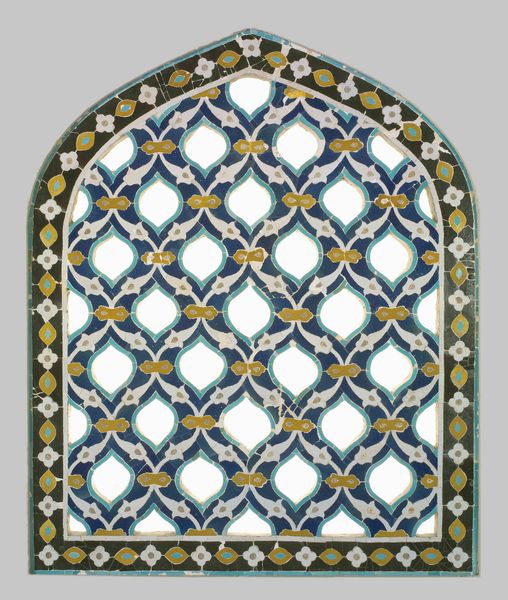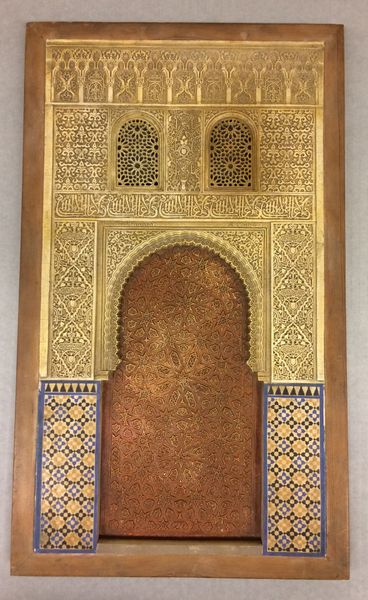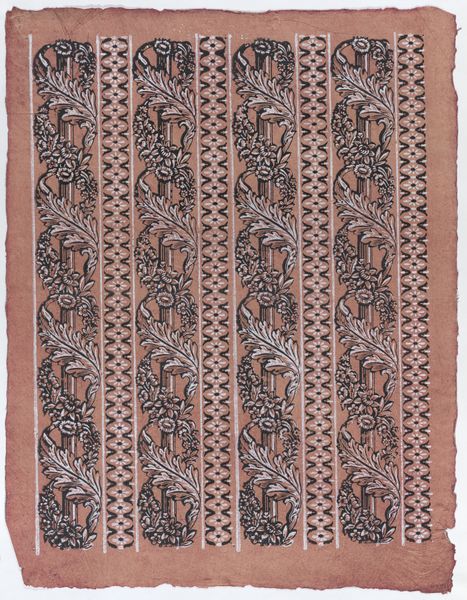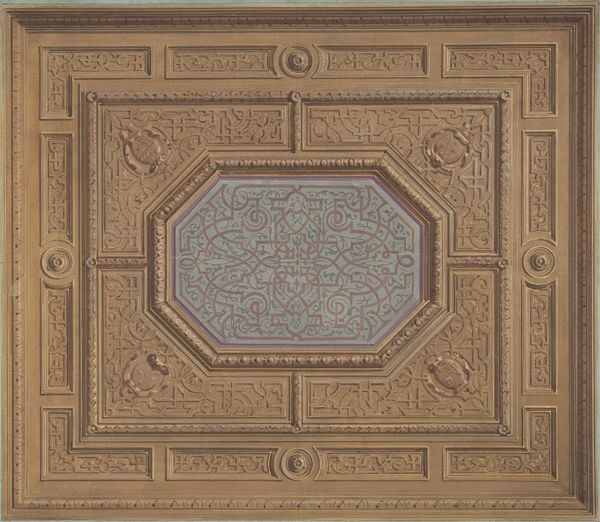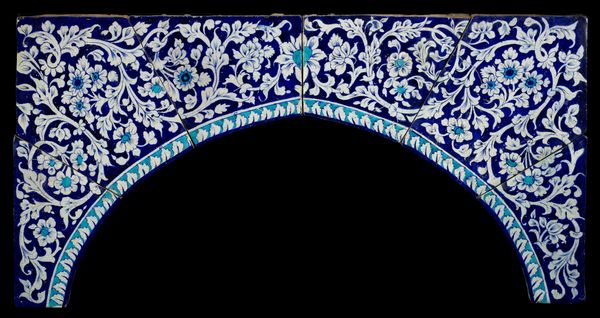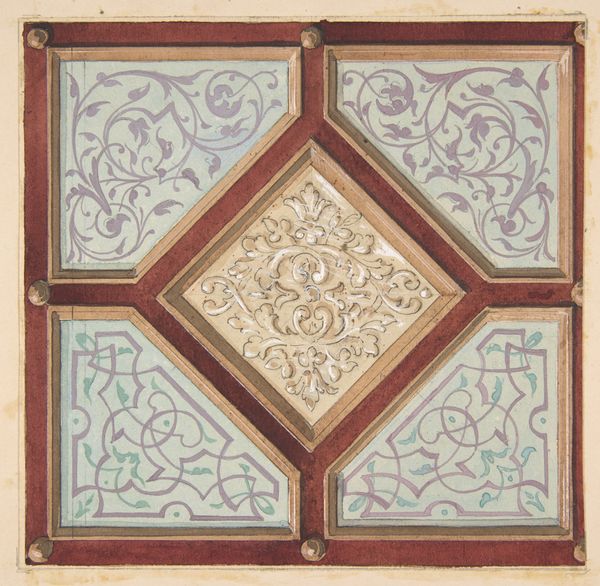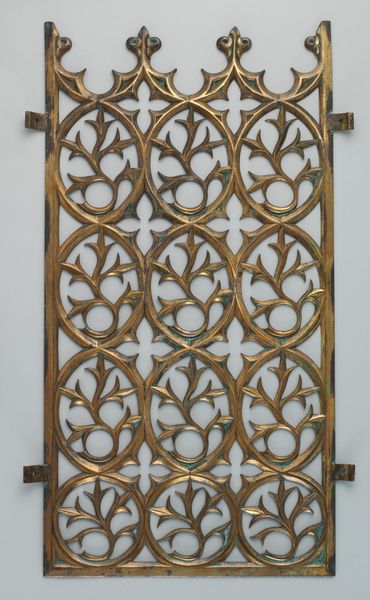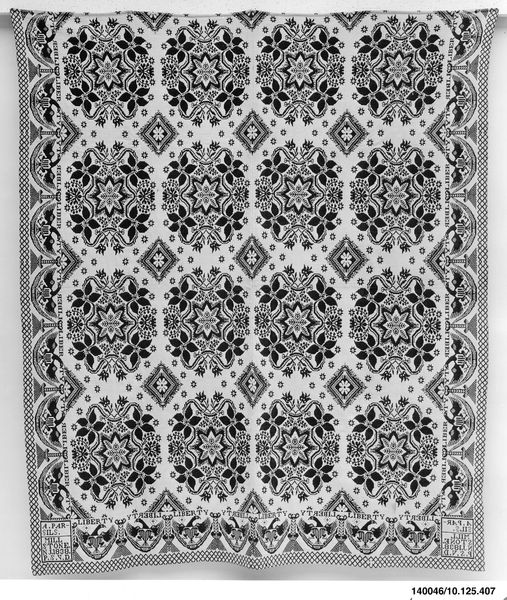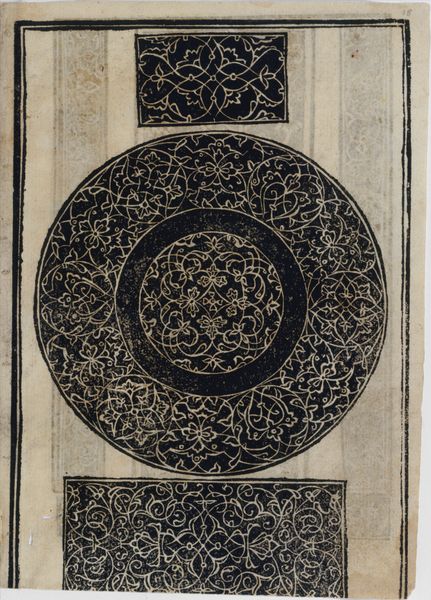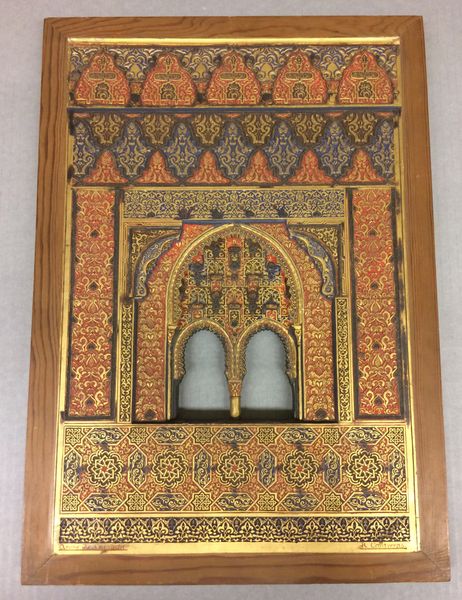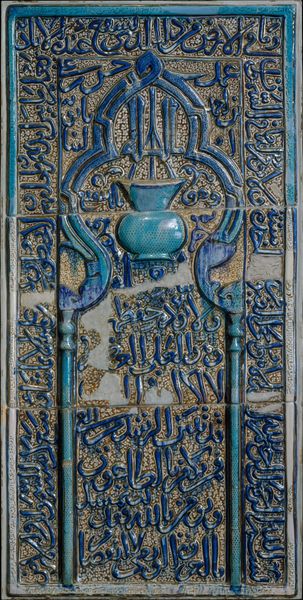
carving, sculpture, architecture
#
natural stone pattern
#
carving
#
man-made pattern
#
geometric pattern
#
repetitive shape and pattern
#
geometric
#
sculpture
#
repetition of pattern
#
intricate pattern
#
pattern repetition
#
islamic-art
#
beaded
#
layered pattern
#
repetitive pattern
#
architecture
Dimensions: 49 x 36 1/2 x 3 3/8 in. (124.5 x 92.7 x 8.6 cm)
Copyright: Public Domain
Curator: Immediately striking. It feels… simultaneously airy and solid. The delicate lattice plays against the weight of the stone. Editor: Indeed. We are looking at a Jali, a window screen, dating back to the early 17th century, likely crafted sometime between 1600 and 1620. The Minneapolis Institute of Art houses this particular example. Curator: It breathes a certain elegance. I notice how the geometric patterns seem to reference cosmic harmony, typical in Islamic art of the era. Editor: Precisely. The intricate carvings aren't merely decorative; they play a functional role, modulating light and air while providing privacy. Jali screens served an important purpose in the architecture of palaces and mosques, particularly in hot climates. We see, beyond aesthetics, social norms shaping design. Curator: Note also the implied layers, psychological, too. The screen filters vision and, perhaps, experience. This layering affects perception, drawing you inward and simultaneously defining interior and exterior worlds. This particular carving uses a series of layered circles throughout the central panel and an elegant series of carved floral elements on top. It would have served the essential function of keeping the hot sunlight at bay, but it adds a layer of intimacy for those on either side of the screen. Editor: The unseen artisan who shaped this stone remains anonymous, yet the enduring object reflects cultural values from its period of creation. One wonders about the individual who spent untold hours on this. This embodies so many crosscurrents, speaking of climate, artistic practices, and social roles through its material being. The concept of "home" changes depending on how our doors and windows welcome us and offer that glimpse between inside and outside. Curator: It resonates, certainly. I look away considering its influence even now on interior design, that yearning to make a place personal with intricate layering of detail. Editor: Absolutely. And in terms of museums, these types of objects that represent both form and function give audiences insight to those things which we all have in common through time.
Comments
minneapolisinstituteofart almost 2 years ago
⋮
Islamic kingdoms of Turkish, Central Asian, and Afghan origins began to exert influence over portions of the Indian subcontinent by about 800 CE. Of them, the impact of the Mughals (reign 1526–1858), famous for building the Taj Mahal, was among the greatest and most enduring. Fluidly carved window screens, or jali, are found throughout South Asia. This jali likely lined a corridor surrounding the tomb of a Mughal emperor or a prominent saint. Jali allowed air and light to circulate within an architectural space, a device well suited for a harsh summer climate. But the design is not merely functional. The central panel features a lattice of interlocking curves—a geometric pattern capable of endless expansion, which in Islamic theology underscores the infinity of the universe. The lattice filtered sunlight into divine light, further invoked here by the calligraphic word “Allah,” Arabic for God, which is carved on one side in the upper corners opposite the floral roundels.
Join the conversation
Join millions of artists and users on Artera today and experience the ultimate creative platform.
